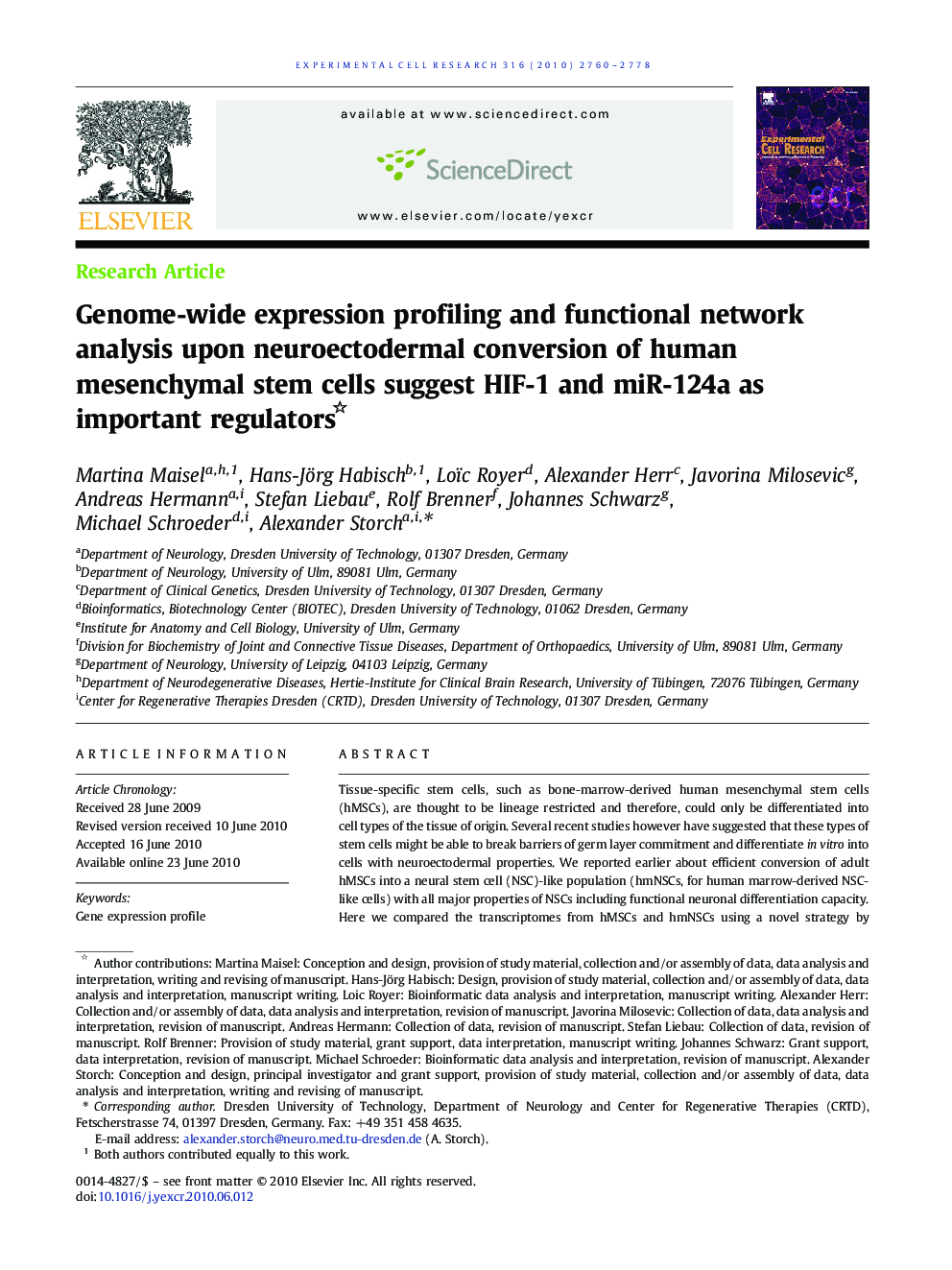| Article ID | Journal | Published Year | Pages | File Type |
|---|---|---|---|---|
| 2131958 | Experimental Cell Research | 2010 | 19 Pages |
Tissue-specific stem cells, such as bone-marrow-derived human mesenchymal stem cells (hMSCs), are thought to be lineage restricted and therefore, could only be differentiated into cell types of the tissue of origin. Several recent studies however have suggested that these types of stem cells might be able to break barriers of germ layer commitment and differentiate in vitro into cells with neuroectodermal properties. We reported earlier about efficient conversion of adult hMSCs into a neural stem cell (NSC)-like population (hmNSCs, for human marrow-derived NSC-like cells) with all major properties of NSCs including functional neuronal differentiation capacity. Here we compared the transcriptomes from hMSCs and hmNSCs using a novel strategy by combining classic Affymetrix oligonucleotide microarray profiling with regulatory and protein interaction network analyses to shed light on regulatory protein networks involved in this neuroectodermal conversion process. We found differential regulation of extracellular matrix protein transcripts, up-regulation of distinct neuroectodermal and NSCs marker genes and local chromosomal transcriptional up-regulation at chromosome 4q13.3. In comparison to hMSCs and primary adult hippocampal NSCs, the transcriptome of hmNSCs displayed minor overlap with both other cell populations. Advanced bioinformatics of regulated genes upon neuroectodermal conversion identified transcription factor networks with HIF-1 and microRNA miR-124a as potential major regulators. Together, transgerminal neuroectodermal conversion of hMSCs into NSC-like cells is accompanied by extensive changes of their global gene expression profile, which might be controlled in part by transcription factor networks related to HIF-1 and miR-124a.
